Your cart is currently empty!
Tag: Risks
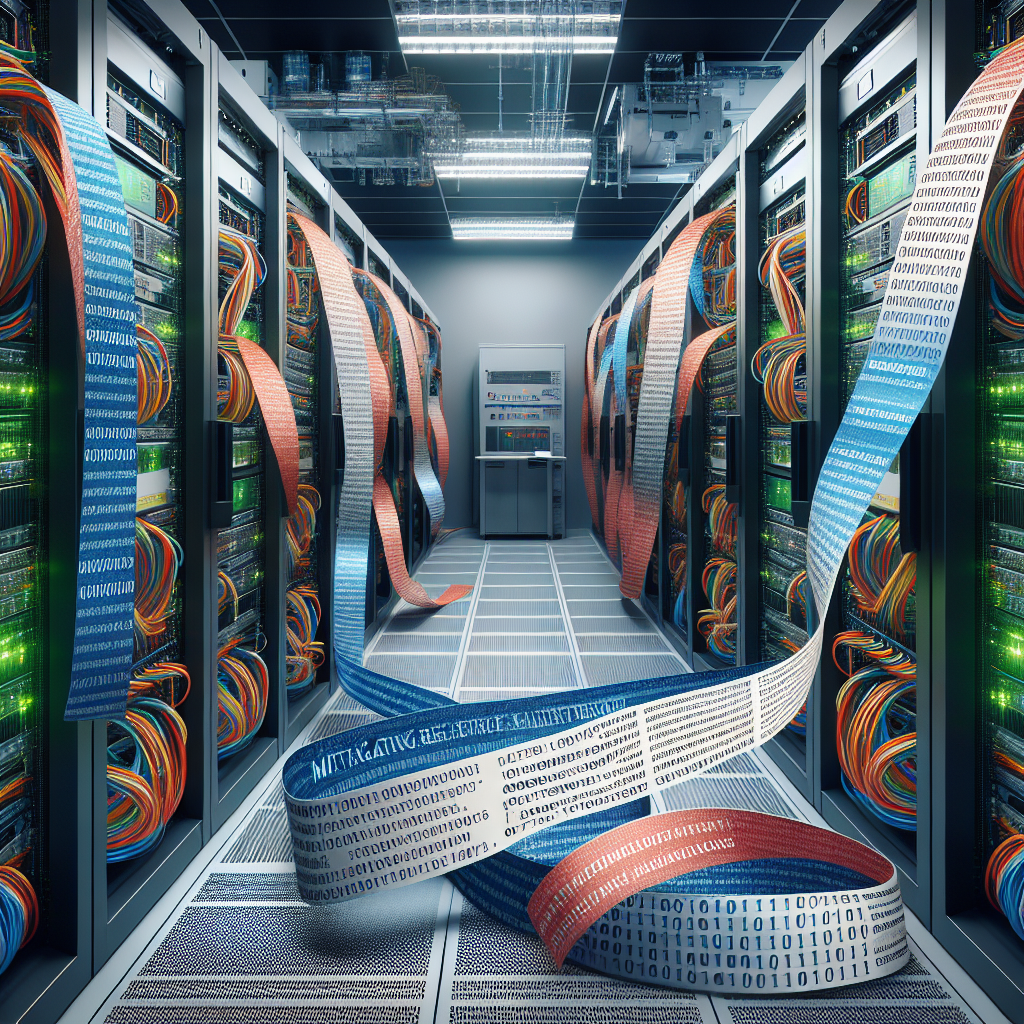
Mitigating Risks: The Importance of Regular Maintenance for Data Center Fire Suppression Systems
Data centers are the heart of many businesses, housing critical equipment and data that keep operations running smoothly. With the increasing reliance on technology, ensuring the safety and security of data centers has become a top priority for organizations. One key aspect of data center safety is fire suppression systems, which are designed to quickly and effectively extinguish fires to prevent damage to equipment and data.However, simply having fire suppression systems in place is not enough to guarantee their effectiveness in the event of a fire. Regular maintenance and testing of these systems are essential to ensure they are in proper working order and can effectively mitigate the risks associated with fires in data centers.
One of the main reasons why regular maintenance is crucial for data center fire suppression systems is to ensure they are compliant with industry standards and regulations. Many regulatory bodies, such as the National Fire Protection Association (NFPA) and the Occupational Safety and Health Administration (OSHA), have specific requirements for the maintenance and testing of fire suppression systems to ensure they are functioning properly. Failure to comply with these regulations can result in fines and penalties, as well as increased risks of fires going undetected or not being properly extinguished.
Regular maintenance also helps to identify and address any potential issues with the fire suppression system before they escalate into larger problems. By conducting routine inspections and testing, maintenance technicians can identify any faulty components, leaks, or other issues that may compromise the system’s effectiveness. Addressing these issues promptly can help prevent system failures during a fire emergency and minimize the risk of damage to equipment and data.
Furthermore, regular maintenance can help extend the lifespan of fire suppression systems and ensure they continue to operate efficiently over time. By performing routine cleaning, testing, and maintenance tasks, data center operators can prevent the buildup of dirt, dust, or other contaminants that can hinder the system’s performance. This can help improve the system’s reliability and reduce the likelihood of false alarms or malfunctions during a fire emergency.
In conclusion, regular maintenance of data center fire suppression systems is essential for mitigating the risks associated with fires and ensuring the safety and security of critical equipment and data. By complying with industry regulations, identifying and addressing potential issues, and extending the lifespan of the system, organizations can protect their data centers from the devastating effects of fires. Investing in regular maintenance is a small price to pay for the peace of mind that comes with knowing your data center is well-protected in the event of a fire.
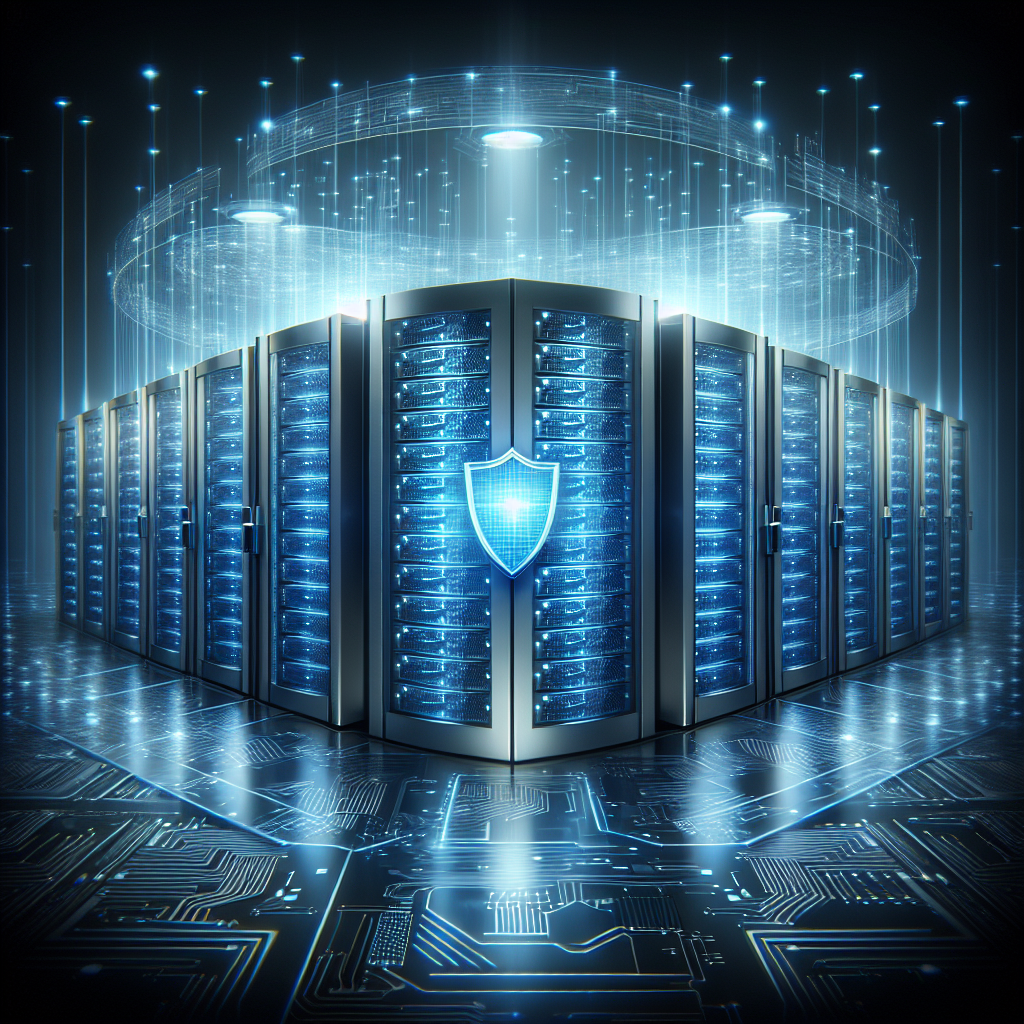
The Role of Data Center Redundancy in Mitigating Downtime Risks
Data centers are the backbone of modern technology infrastructure, housing the servers and networking equipment that power our digital world. As such, the reliability and uptime of these facilities are crucial for businesses and organizations to ensure uninterrupted service and data accessibility.One of the key strategies in ensuring high availability and minimizing downtime risks in data centers is redundancy. Redundancy refers to the practice of having backup systems and components in place to ensure continuous operation in the event of a failure or outage. This redundancy can be applied at various levels within a data center, from power and cooling systems to networking and storage infrastructure.
Power redundancy is perhaps the most critical aspect of data center redundancy, as any interruption in power supply can lead to downtime and data loss. To mitigate this risk, data centers typically employ multiple layers of redundancy, including backup generators, uninterruptible power supply (UPS) systems, and redundant power distribution units (PDUs). These redundant systems ensure that critical infrastructure remains powered even in the event of a utility power outage or equipment failure.
Cooling redundancy is another important component of data center resilience, as overheating can cause equipment failure and downtime. Redundant cooling systems, such as redundant air conditioning units or liquid cooling solutions, help maintain optimal operating temperatures and prevent equipment overheating.
Networking redundancy is also crucial for ensuring continuous connectivity and data access. Redundant network switches, routers, and network connections help distribute traffic and ensure that data can flow smoothly even in the event of a network failure.
Storage redundancy is essential for protecting data integrity and ensuring availability. Redundant storage arrays, such as RAID configurations or storage area networks (SANs), help ensure that data is replicated and protected against hardware failures.
Overall, data center redundancy plays a critical role in mitigating downtime risks and ensuring high availability of services and data. By implementing redundant systems and components at various levels of the data center infrastructure, organizations can minimize the impact of failures and outages, ensuring that their operations remain uninterrupted and their data remains accessible at all times.
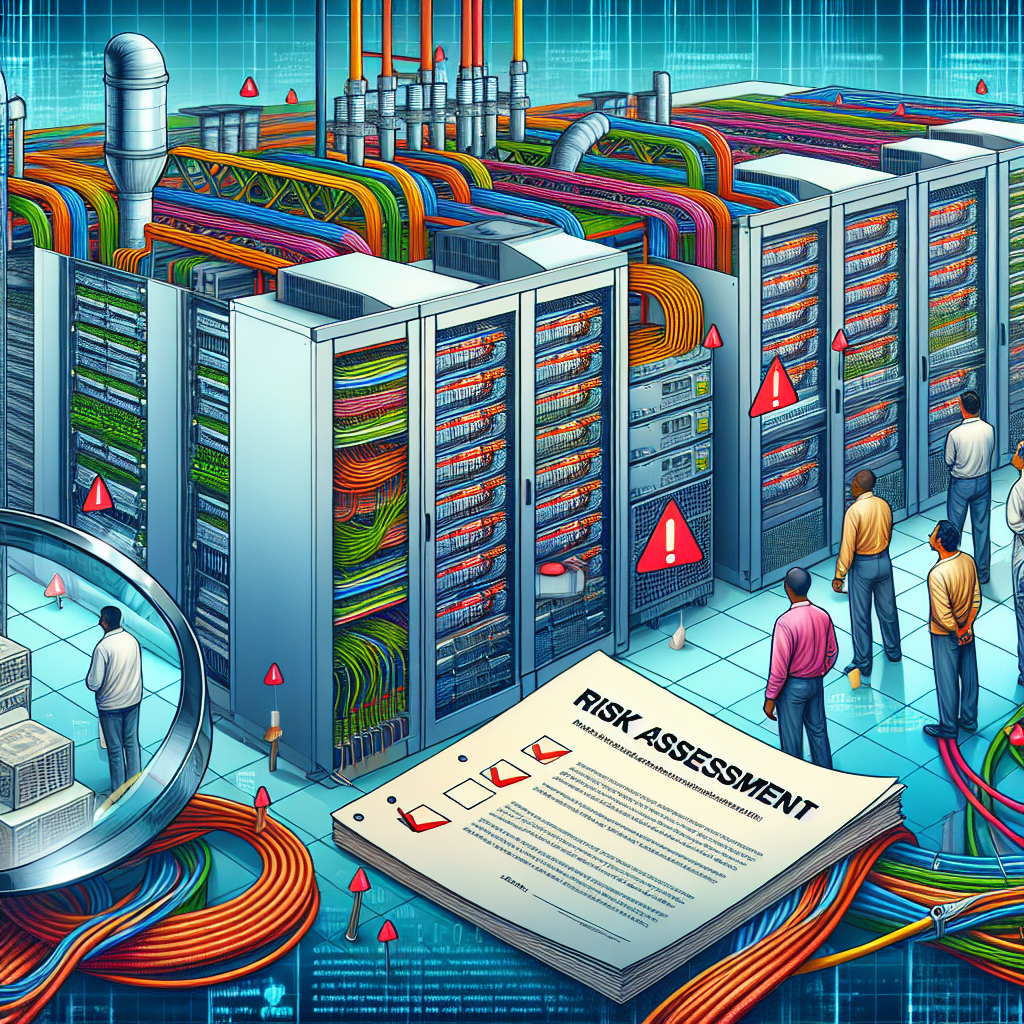
Understanding and Managing Data Center Risks: Best Practices for Effective Risk Assessment
In today’s digital age, data centers play a crucial role in storing and managing vast amounts of data for businesses. However, with this increased reliance on data centers comes a heightened level of risk. From cyber attacks to natural disasters, there are a variety of potential threats that can compromise the security and availability of data stored in these facilities.To effectively manage these risks, it is essential for businesses to conduct thorough risk assessments of their data centers. By identifying potential vulnerabilities and developing strategies to mitigate them, organizations can better protect their valuable data and ensure business continuity.
One of the first steps in conducting a risk assessment for a data center is to identify all potential threats. This can include everything from cyber attacks and power outages to physical security breaches and natural disasters. By understanding the full scope of potential risks, businesses can develop a comprehensive strategy for managing and mitigating them.
Once potential threats have been identified, the next step is to assess the likelihood and impact of each threat. By quantifying the probability of each threat occurring and the potential consequences if it does, organizations can prioritize their risk management efforts and allocate resources accordingly.
In addition to assessing the likelihood and impact of potential threats, businesses should also evaluate the effectiveness of their current security measures and disaster recovery plans. By identifying any gaps or weaknesses in their existing systems, organizations can implement additional controls and safeguards to better protect their data.
When it comes to managing data center risks, there are several best practices that businesses can follow to improve their risk assessment process:
1. Regularly update risk assessments: Data center risks are constantly evolving, so it is important for businesses to regularly review and update their risk assessments to account for any new threats or vulnerabilities.
2. Implement multi-layered security measures: To protect against cyber attacks and other security threats, organizations should implement a multi-layered security approach that includes firewalls, encryption, access controls, and monitoring tools.
3. Develop a comprehensive disaster recovery plan: In the event of a natural disaster or other catastrophic event, businesses should have a detailed disaster recovery plan in place to ensure that data can be quickly recovered and operations can resume as soon as possible.
4. Conduct regular security audits: Regular security audits can help businesses identify any weaknesses in their data center security measures and address them before they are exploited by malicious actors.
By following these best practices for effective risk assessment, businesses can better protect their data centers and ensure the security and availability of their critical data. In today’s digital landscape, where data is increasingly valuable and vulnerable, proactively managing data center risks is essential for the long-term success and resilience of businesses.

The Role of Data Center Audits in Mitigating Risks and Ensuring Business Continuity
Data centers play a critical role in today’s digital age, serving as the backbone of many organizations’ IT infrastructure. With the increasing volume of data being generated and stored, ensuring the security and reliability of data centers is more important than ever. Data center audits are essential in mitigating risks and ensuring business continuity.Data center audits involve a thorough examination of the facility’s infrastructure, processes, and security measures to ensure compliance with industry standards and regulations. These audits help identify potential vulnerabilities and weaknesses that could compromise the integrity of data stored in the facility. By conducting regular audits, organizations can proactively address any issues and implement necessary improvements to enhance the security and efficiency of their data centers.
One of the primary benefits of data center audits is the identification of potential risks and vulnerabilities that could lead to data breaches or system failures. By conducting a comprehensive audit, organizations can assess the effectiveness of their security measures and address any gaps or weaknesses that could be exploited by malicious actors. This proactive approach to risk management helps organizations mitigate potential threats and protect their sensitive data from unauthorized access.
In addition to mitigating risks, data center audits also play a crucial role in ensuring business continuity. By assessing the resilience of the data center infrastructure and identifying potential points of failure, organizations can develop robust contingency plans to minimize downtime and ensure uninterrupted access to critical data and applications. In the event of a disaster or system failure, having a well-defined business continuity plan in place can help organizations quickly recover and resume normal operations, minimizing the impact on business operations and customers.
Furthermore, data center audits are essential for demonstrating compliance with industry regulations and standards. Many organizations are subject to strict data protection regulations, such as the General Data Protection Regulation (GDPR) and the Health Insurance Portability and Accountability Act (HIPAA), which require stringent security measures to protect sensitive data. By conducting regular audits, organizations can ensure that their data center meets the necessary compliance requirements and avoid potential penalties for non-compliance.
Overall, data center audits play a critical role in mitigating risks and ensuring business continuity in today’s digital landscape. By identifying potential vulnerabilities, assessing the effectiveness of security measures, and demonstrating compliance with industry regulations, organizations can proactively protect their data and maintain the trust of their customers. Investing in regular data center audits is essential for safeguarding the integrity and reliability of data center operations in an increasingly interconnected and data-driven world.
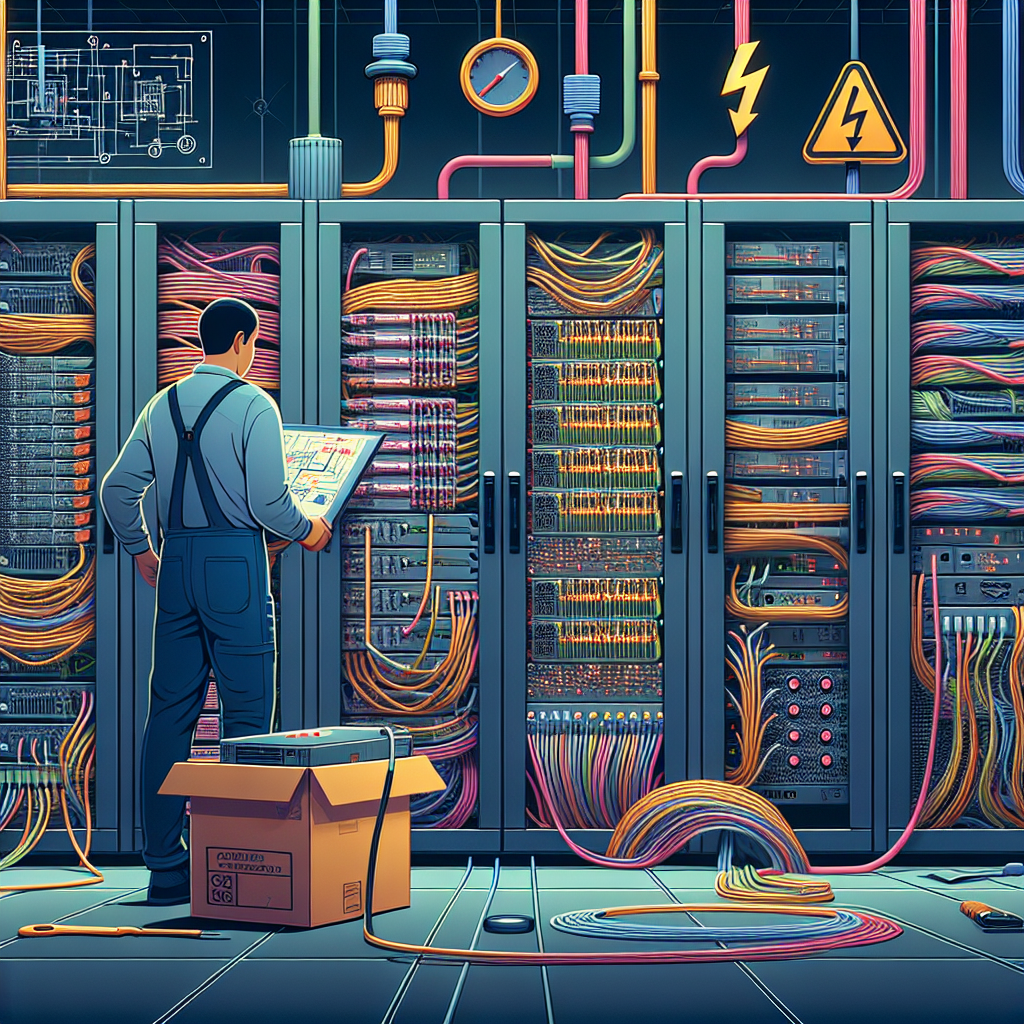
Mitigating Risks in Data Center Electrical Systems
Data centers are critical infrastructure that house and process vast amounts of data for organizations of all sizes. As such, the electrical systems within data centers are crucial to ensuring uninterrupted operations and preventing costly downtime. Mitigating risks in data center electrical systems is essential to maintain reliability and efficiency.One of the key risks in data center electrical systems is power outages. These can be caused by a variety of factors, including equipment failures, grid failures, or natural disasters. To mitigate this risk, data centers should have redundant power systems in place, such as backup generators or uninterruptible power supply (UPS) systems. These systems can provide temporary power in the event of an outage, ensuring that critical operations can continue without interruption.
Another risk in data center electrical systems is electrical fires. Electrical fires can be caused by overloaded circuits, faulty wiring, or equipment malfunctions. To mitigate this risk, data centers should regularly inspect and maintain their electrical systems to ensure they are in good working order. This includes checking for loose connections, damaged cables, and outdated equipment. In addition, data centers should have fire suppression systems in place to quickly extinguish any fires that do occur.
Data centers also face the risk of power surges and spikes, which can damage sensitive equipment and lead to data loss. To mitigate this risk, data centers should invest in surge protection devices and voltage regulators to protect their electrical systems from fluctuations in power. These devices can help prevent damage to equipment and ensure that data remains safe and secure.
Overall, mitigating risks in data center electrical systems requires a proactive approach to maintenance and monitoring. By investing in redundant power systems, conducting regular inspections, and implementing protective measures such as surge protection devices, data centers can minimize the risk of downtime and damage to equipment. By taking these steps, data centers can ensure that their electrical systems are reliable and resilient, supporting the critical operations they house.

The Importance of Data Center Safety: Mitigating Risks and Preventing Accidents
Data centers play a crucial role in today’s digital age, serving as the backbone of the vast network of servers and equipment that power our online world. With the increasing reliance on data centers for storing and processing massive amounts of data, ensuring the safety and security of these facilities has never been more important.Data center safety goes beyond just protecting the physical infrastructure of the facility – it also involves safeguarding the valuable data stored within. From preventing accidents that could lead to downtime and data loss to mitigating risks of cyber attacks and breaches, maintaining a safe and secure data center environment is essential for businesses to operate smoothly and protect their sensitive information.
One of the key aspects of data center safety is mitigating the risks of accidents that could lead to costly downtime and potential data loss. Data centers are complex environments with a multitude of equipment and systems, and any malfunction or failure could have serious consequences. By implementing proper safety protocols, regular maintenance checks, and employee training, data center operators can minimize the risk of accidents and ensure the continuous operation of their facility.
In addition to physical safety measures, data center operators also need to be vigilant about cybersecurity threats. With the rise of cyber attacks targeting data centers, it is crucial for operators to implement robust security measures to protect against unauthorized access, data breaches, and other malicious activities. This includes implementing firewalls, intrusion detection systems, encryption protocols, and regular security audits to identify and address potential vulnerabilities.
Furthermore, data center safety also extends to the health and well-being of employees working in these facilities. Data center operators must ensure a safe working environment for their staff by providing proper training on equipment operation, emergency procedures, and hazard recognition. Regular safety inspections, ergonomic assessments, and employee wellness programs can also help prevent workplace injuries and promote a healthy work environment.
Overall, the importance of data center safety cannot be overstated. By mitigating risks, preventing accidents, and protecting against cyber threats, data center operators can ensure the continued operation of their facilities and safeguard the valuable data stored within. Investing in safety measures not only protects the business from potential financial losses but also helps to build trust with customers and stakeholders who rely on the data center for their operations. In today’s digital landscape, data center safety is a top priority for businesses looking to maintain a competitive edge and protect their most valuable assets.

Maximizing Efficiency and Minimizing Risks: Best Practices for Data Center Inspections
Data centers play a crucial role in today’s digital age, serving as the backbone for storing, processing, and managing vast amounts of data. With the increasing demand for data storage and processing capabilities, it is more important than ever to ensure that data centers are operating efficiently and securely. One way to achieve this is through regular inspections and maintenance.Data center inspections are essential for identifying potential issues, ensuring compliance with regulations, and maximizing efficiency. By following best practices for data center inspections, organizations can minimize risks, improve performance, and prolong the lifespan of their equipment.
Here are some best practices for conducting data center inspections:
1. Develop a comprehensive inspection checklist: Before conducting an inspection, it is important to create a detailed checklist that covers all aspects of the data center, including power distribution, cooling systems, security measures, and equipment maintenance. This checklist should be tailored to the specific needs and requirements of the data center.
2. Schedule regular inspections: Regular inspections are essential for identifying potential problems before they escalate into major issues. It is recommended to conduct inspections on a monthly or quarterly basis, depending on the size and complexity of the data center.
3. Use technology to streamline inspections: Leveraging technology, such as data center management software and remote monitoring tools, can help streamline the inspection process and provide real-time insights into the performance of the data center. This can help identify issues quickly and proactively address them.
4. Focus on energy efficiency: Energy consumption is a significant cost factor for data centers, so it is important to focus on maximizing energy efficiency during inspections. This includes monitoring power usage, optimizing cooling systems, and implementing energy-saving measures.
5. Ensure compliance with regulations: Data centers are subject to various regulations and industry standards, such as the International Organization for Standardization (ISO) and the Uptime Institute’s Tier Classification System. It is important to ensure that the data center complies with these regulations during inspections.
6. Document findings and take corrective actions: After conducting an inspection, it is crucial to document all findings and recommendations for improvement. This documentation can help track progress, identify recurring issues, and prioritize corrective actions.
By following these best practices for data center inspections, organizations can maximize efficiency, minimize risks, and ensure the smooth operation of their data centers. Regular inspections are essential for maintaining the performance and security of data centers, ultimately leading to cost savings and improved reliability.

Mitigating Risks and Ensuring Data Center Business Continuity
In today’s digital age, data centers play a crucial role in ensuring the smooth operation of businesses. These facilities house critical IT infrastructure and store vast amounts of data, making them a prime target for cyberattacks, natural disasters, and equipment failures. As such, it is essential for businesses to implement robust risk mitigation strategies to protect their data centers and ensure business continuity.One of the key steps in mitigating risks and ensuring data center business continuity is to conduct a thorough risk assessment. This involves identifying potential threats and vulnerabilities that could impact the data center, such as power outages, hardware failures, and cyberattacks. By understanding these risks, businesses can develop appropriate mitigation measures to minimize the likelihood of disruptions.
Implementing strong physical security measures is also essential for protecting data centers from external threats. This includes restricting access to the facility, installing surveillance cameras, and implementing biometric authentication systems. By limiting access to authorized personnel only, businesses can reduce the risk of unauthorized individuals gaining access to sensitive data.
In addition to physical security measures, businesses should also invest in cybersecurity solutions to protect their data centers from cyber threats. This includes implementing firewalls, antivirus software, and intrusion detection systems to detect and prevent malicious activities. Regular security audits and penetration testing can also help identify and address any vulnerabilities in the data center’s IT infrastructure.
Another crucial aspect of ensuring data center business continuity is to have a comprehensive disaster recovery plan in place. This plan should outline the steps to be taken in the event of a data center outage or disaster, including backup and recovery procedures, communication protocols, and alternative data center locations. Regular testing of the disaster recovery plan is essential to ensure that it is effective and can be implemented quickly in the event of an emergency.
Furthermore, businesses should consider implementing redundancy and failover mechanisms to ensure data center uptime and availability. This includes having backup power sources, redundant networking equipment, and data replication systems in place to minimize downtime and data loss in the event of a failure.
Ultimately, mitigating risks and ensuring data center business continuity requires a holistic approach that combines physical security, cybersecurity, disaster recovery planning, and redundancy measures. By implementing these strategies, businesses can protect their data centers from threats and disruptions, ensuring the continuous operation of their critical IT infrastructure.

Data Center Uptime: How to Plan for and Mitigate Potential Risks
In today’s digital age, data centers play a crucial role in ensuring the smooth operation of businesses and organizations. These facilities house a vast amount of critical data and applications that are essential for day-to-day operations. As such, ensuring high uptime and availability of data center services is paramount. However, despite the best efforts of data center operators, downtime can still occur due to a variety of factors. In this article, we will discuss how to plan for and mitigate potential risks to data center uptime.One of the first steps in ensuring high uptime for a data center is to conduct a thorough risk assessment. This involves identifying potential risks that could lead to downtime, such as power outages, equipment failures, natural disasters, and cyberattacks. By understanding these risks, data center operators can develop a comprehensive plan to mitigate them and minimize the impact on uptime.
One of the most common causes of downtime in data centers is power outages. To mitigate this risk, data center operators should invest in robust power backup systems, such as uninterruptible power supplies (UPS) and generators. These systems can provide backup power in the event of a grid outage, ensuring that critical systems remain operational.
Equipment failures are another common cause of downtime in data centers. To mitigate this risk, data center operators should implement a proactive maintenance program to regularly inspect and maintain critical infrastructure components, such as servers, cooling systems, and networking equipment. By identifying and addressing potential issues before they escalate into major failures, operators can minimize the risk of downtime.
Natural disasters, such as earthquakes, hurricanes, and floods, can also pose a significant risk to data center uptime. To mitigate this risk, data center operators should implement redundant infrastructure and disaster recovery plans. Redundant systems, such as backup data centers and mirrored servers, can help ensure continuity of operations in the event of a natural disaster. Additionally, data center operators should regularly test their disaster recovery plans to ensure they are effective in a real-world scenario.
Finally, cyberattacks are an increasingly prevalent threat to data center uptime. To mitigate this risk, data center operators should implement robust cybersecurity measures, such as firewalls, intrusion detection systems, and encryption. Regular security audits and penetration testing can help identify vulnerabilities in the data center’s infrastructure and applications, allowing operators to address them before they are exploited by malicious actors.
In conclusion, ensuring high uptime for a data center requires careful planning and proactive risk mitigation strategies. By conducting a thorough risk assessment, investing in robust power backup systems, implementing proactive maintenance programs, developing disaster recovery plans, and implementing cybersecurity measures, data center operators can minimize the risk of downtime and ensure the continuity of operations. Ultimately, a proactive approach to risk management is essential for maintaining high uptime and availability in today’s data-driven world.
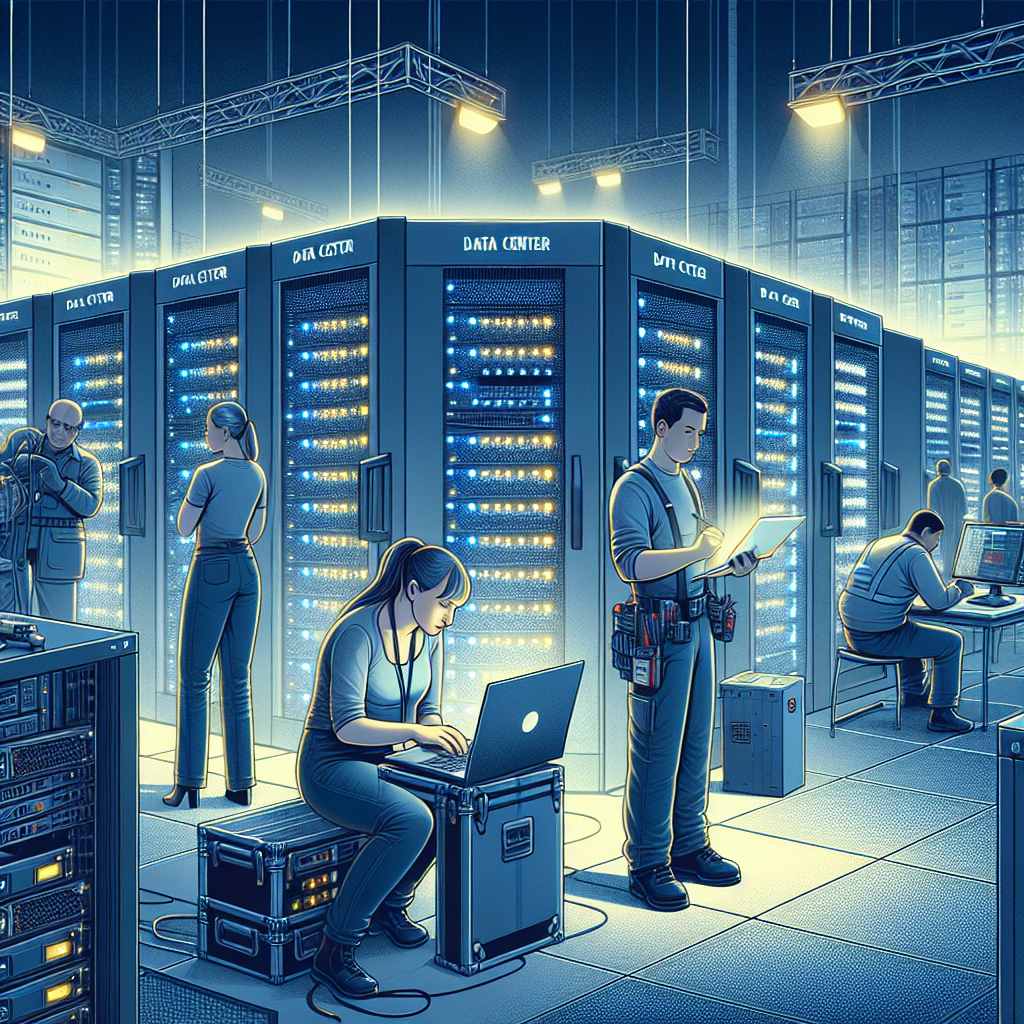
Mitigating Risks: The Case for Data Center Resilience
In today’s digital age, data centers play a crucial role in storing and processing vast amounts of information for businesses and organizations. With the increasing reliance on data centers, ensuring their resilience and mitigating risks has become a top priority for IT professionals.Data center resilience refers to the ability of a data center to continue operating smoothly and securely in the face of various threats, such as natural disasters, cyber-attacks, power outages, and equipment failures. A resilient data center is one that can withstand these challenges and maintain the availability, integrity, and confidentiality of data.
Mitigating risks in data centers involves implementing a comprehensive strategy that includes both preventive measures and contingency plans. Here are some key factors to consider when building a resilient data center:
1. Redundancy: Redundancy is a critical aspect of data center resilience. This involves having backup systems and components in place to ensure continuous operation in case of a failure. Redundancy can be applied to power supplies, networking equipment, cooling systems, and data storage to minimize the impact of potential disruptions.
2. Disaster Recovery Planning: Developing a robust disaster recovery plan is essential for mitigating risks in data centers. This plan should outline procedures for recovering data and restoring operations in the event of a disaster. Regular testing and updates of the disaster recovery plan are necessary to ensure its effectiveness.
3. Physical Security: Data centers house valuable and sensitive information, making them prime targets for physical security threats. Implementing strict access controls, surveillance systems, and security protocols can help prevent unauthorized access and potential breaches.
4. Cybersecurity Measures: Data centers are also vulnerable to cyber-attacks, which can lead to data breaches and service disruptions. Implementing strong cybersecurity measures, such as firewalls, encryption, and intrusion detection systems, can help protect data from malicious threats.
5. Monitoring and Maintenance: Regular monitoring and maintenance of data center infrastructure are essential for identifying and addressing potential risks before they escalate. Monitoring systems can help detect equipment failures, power fluctuations, and other issues that could impact data center operations.
In conclusion, data center resilience is crucial for ensuring the continuous operation and security of critical data and services. By implementing a comprehensive strategy that includes redundancy, disaster recovery planning, physical security, cybersecurity measures, and regular monitoring and maintenance, organizations can mitigate risks and enhance the resilience of their data centers. Investing in data center resilience is not only a prudent business decision but also a critical step in safeguarding sensitive information and maintaining business continuity in the face of unforeseen challenges.
